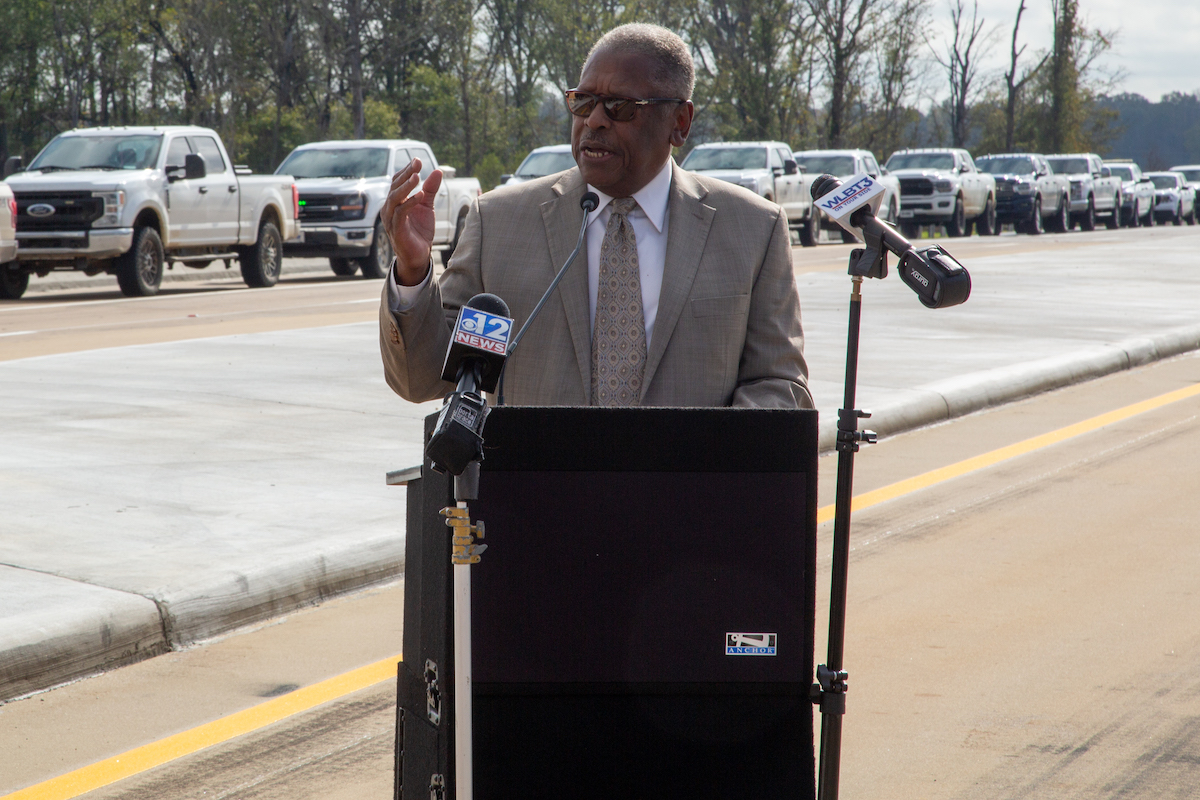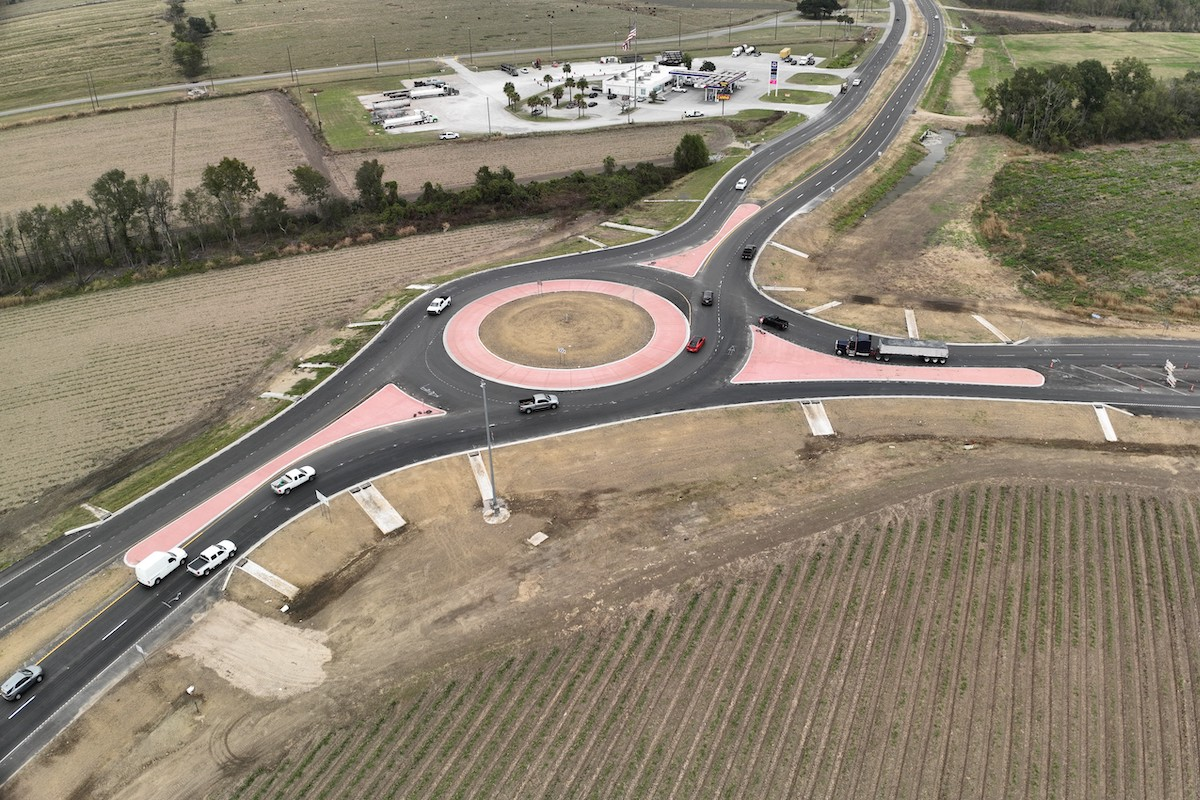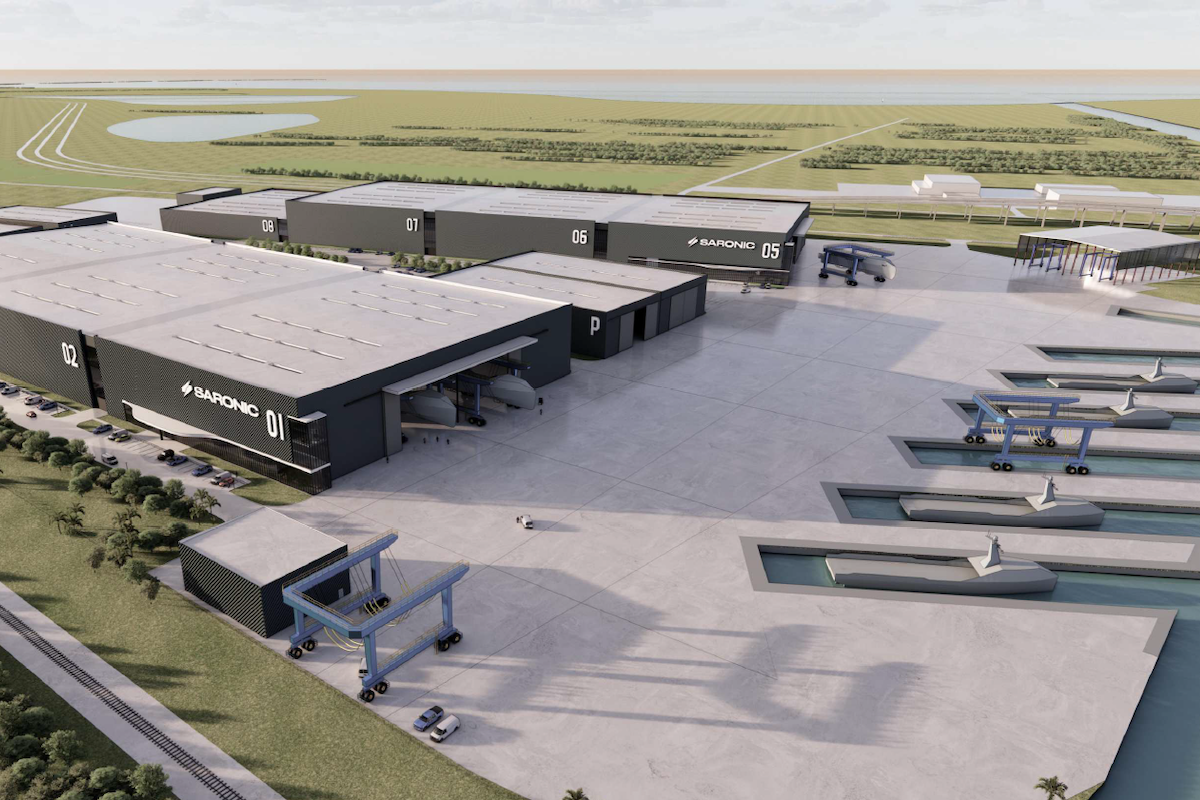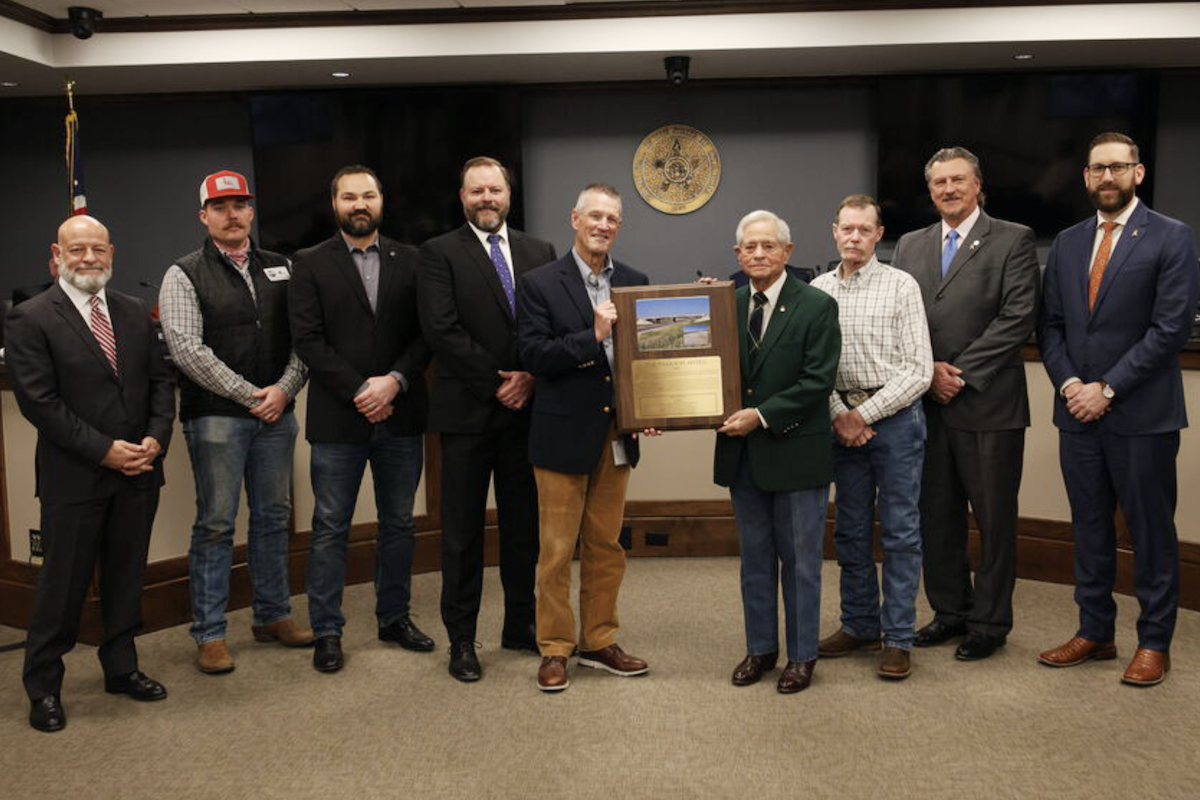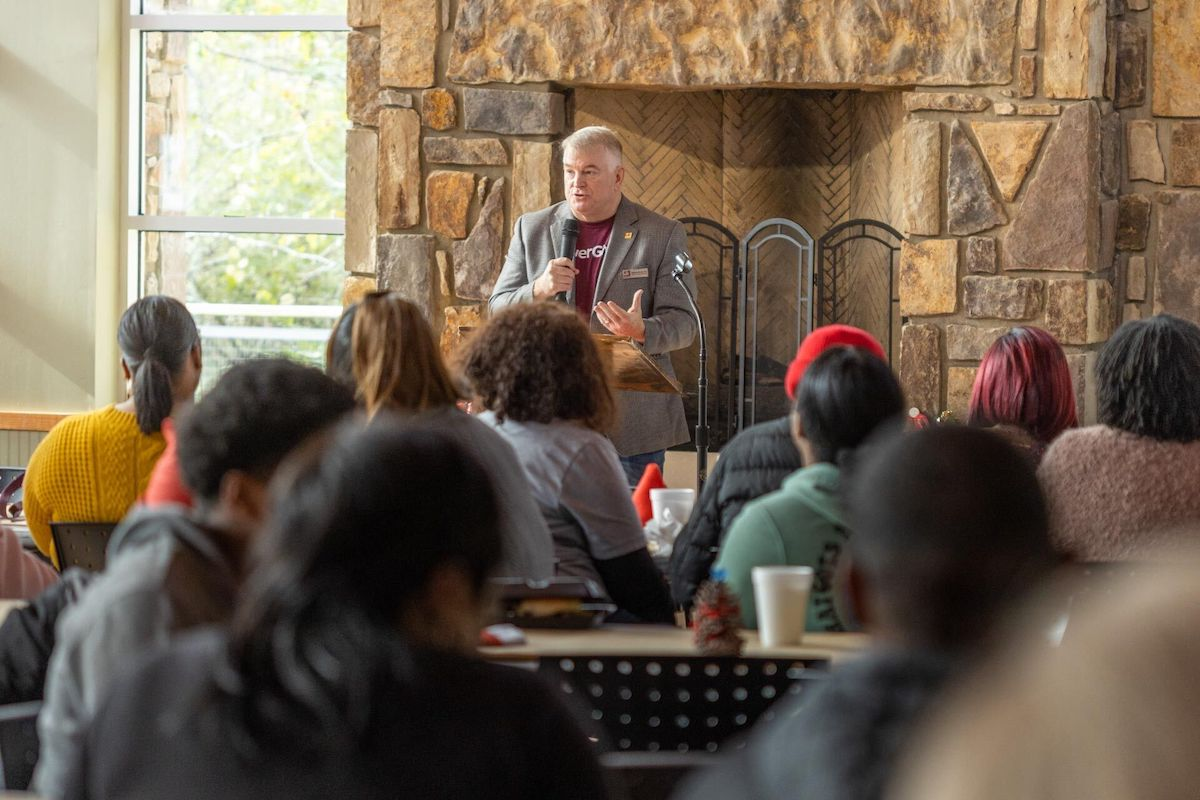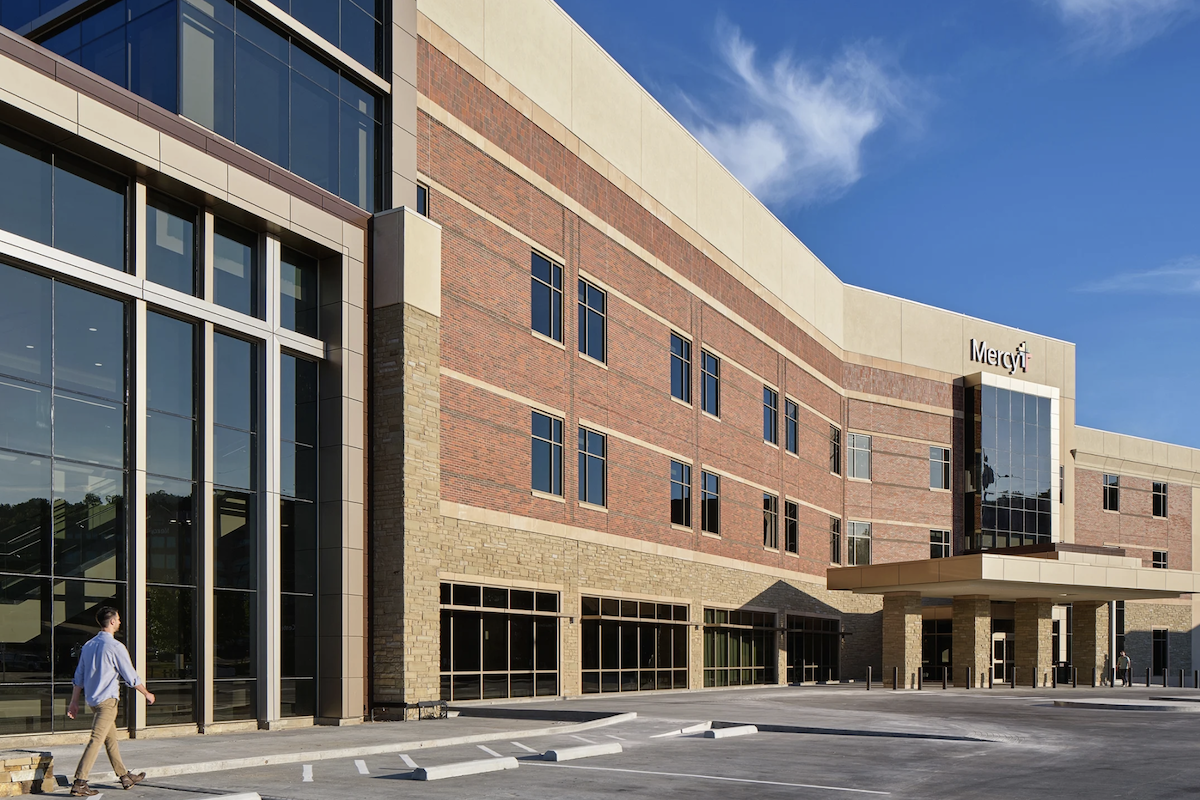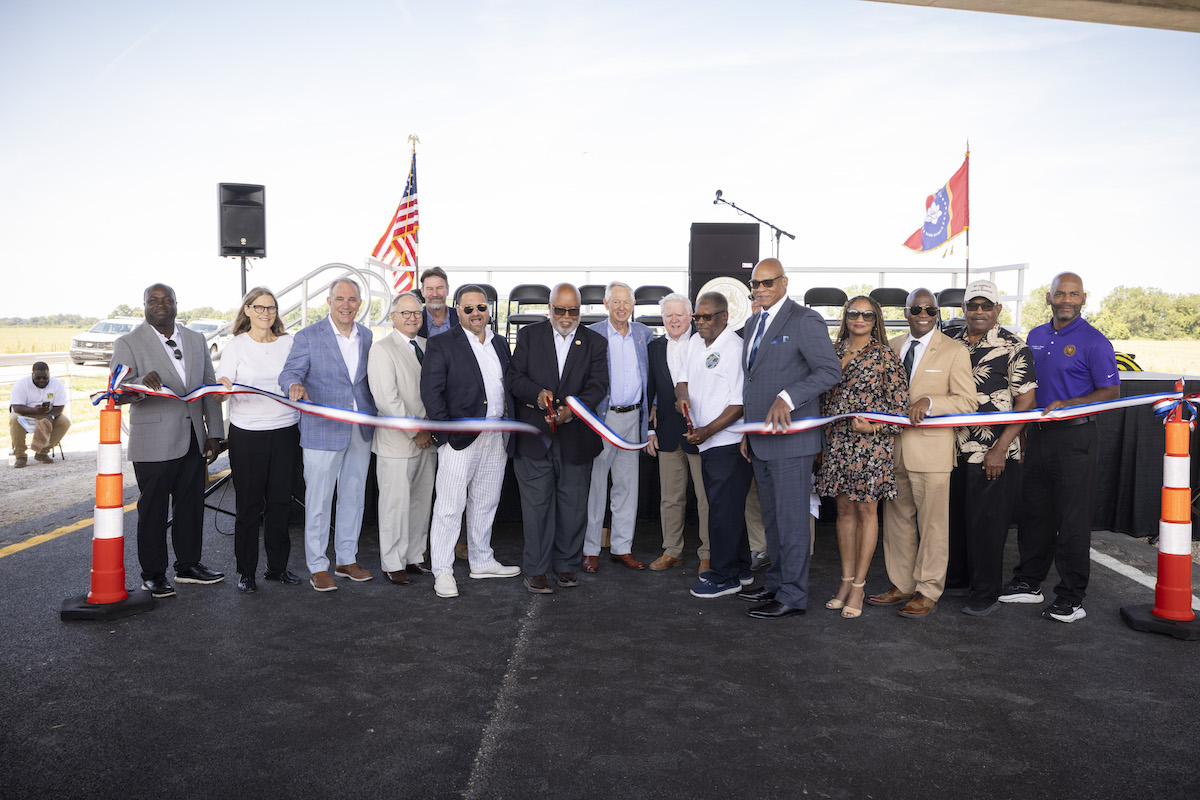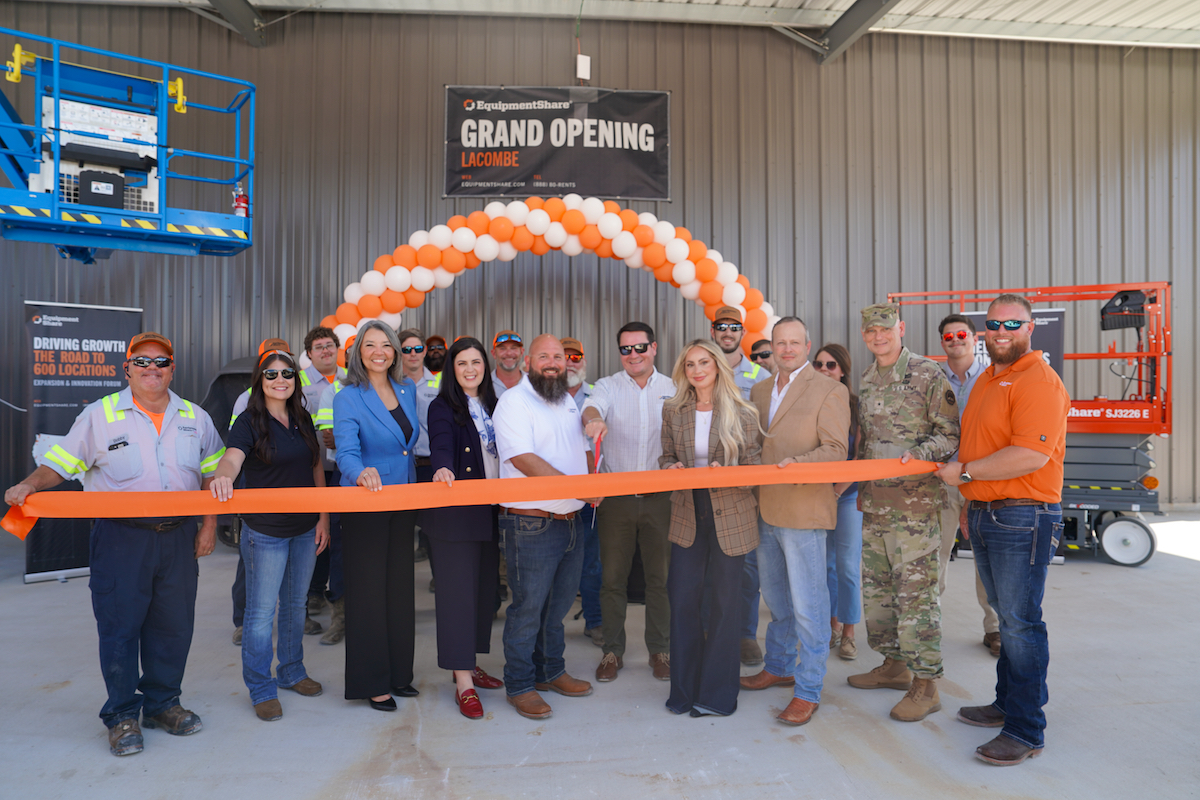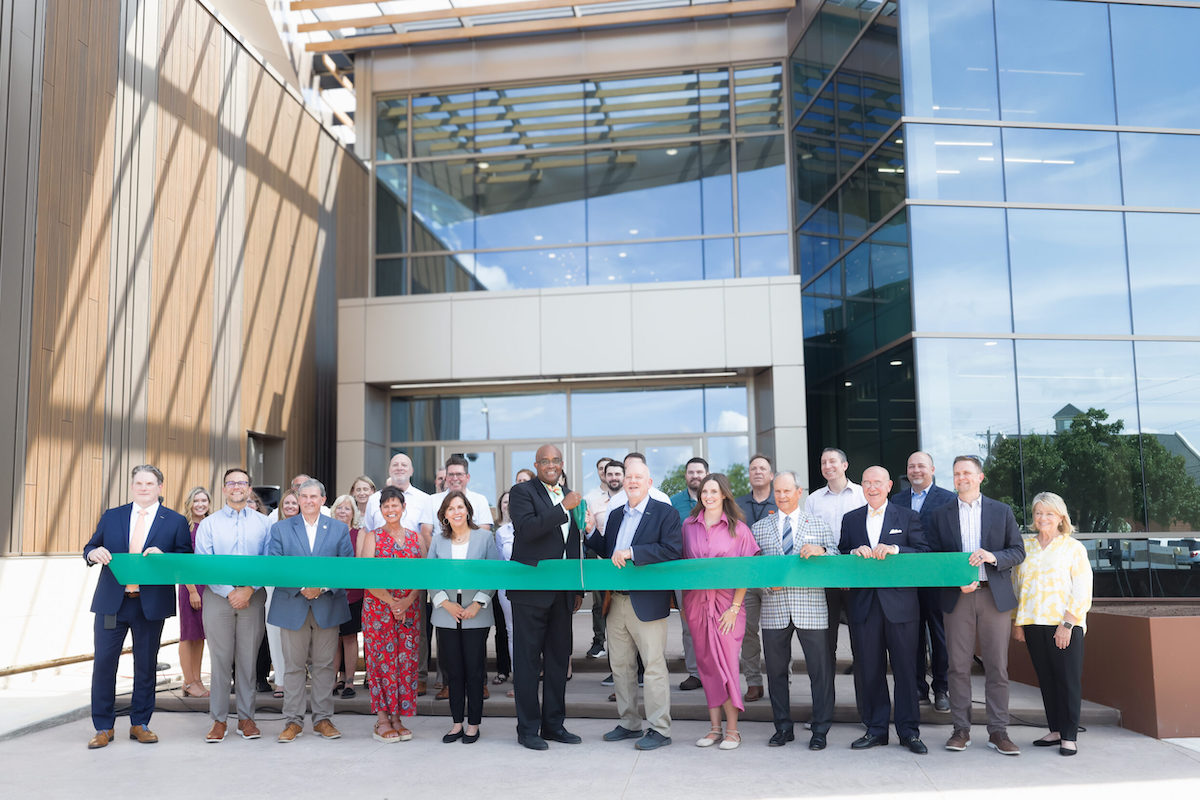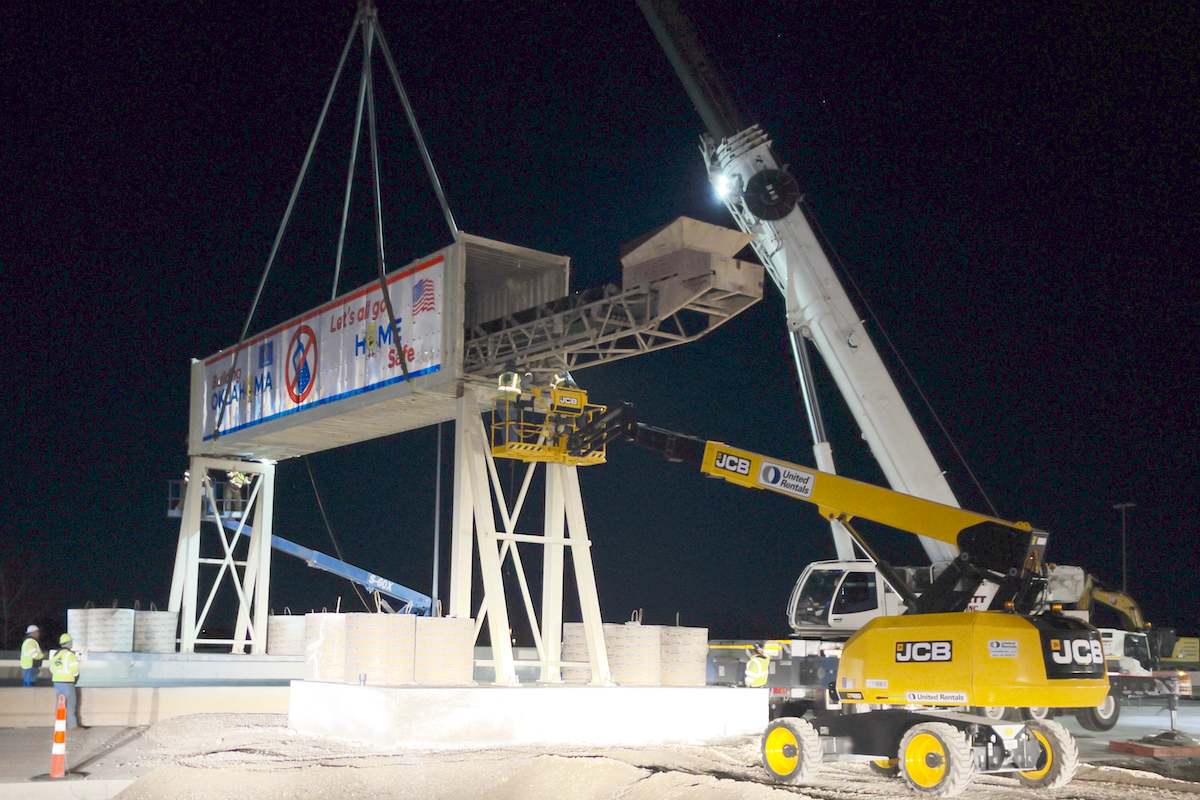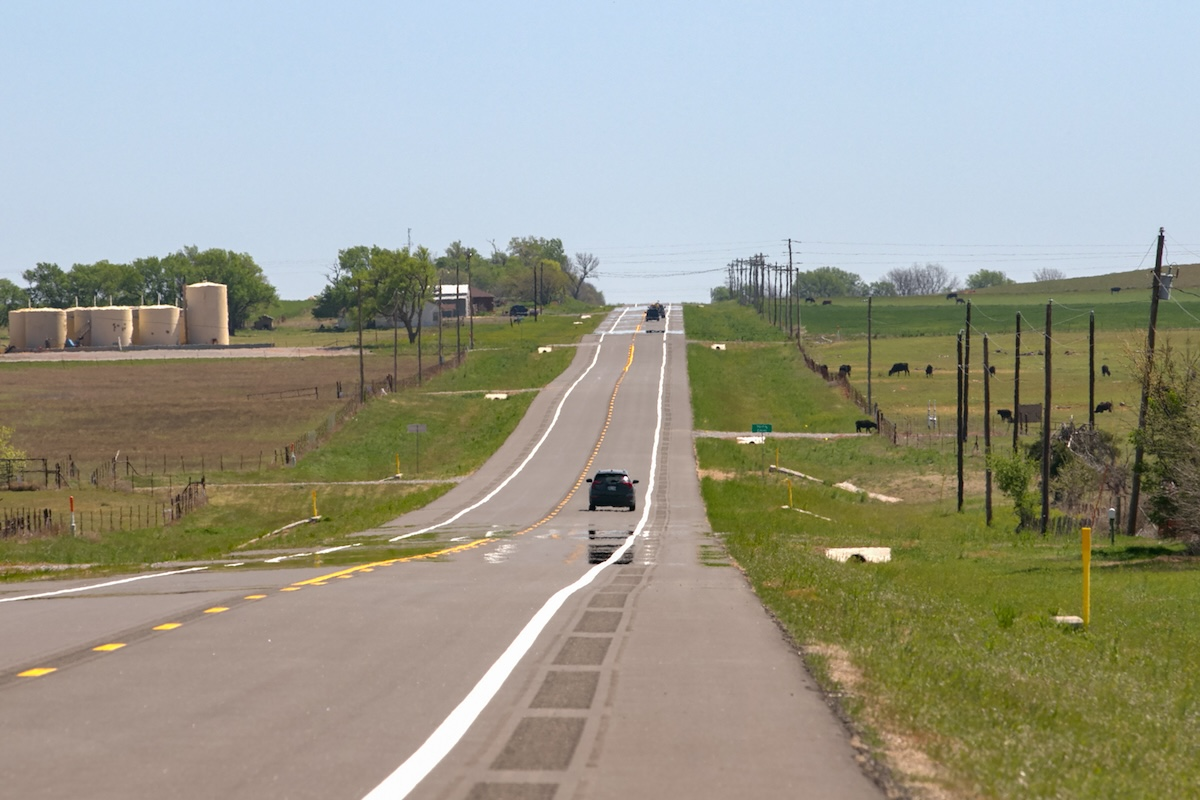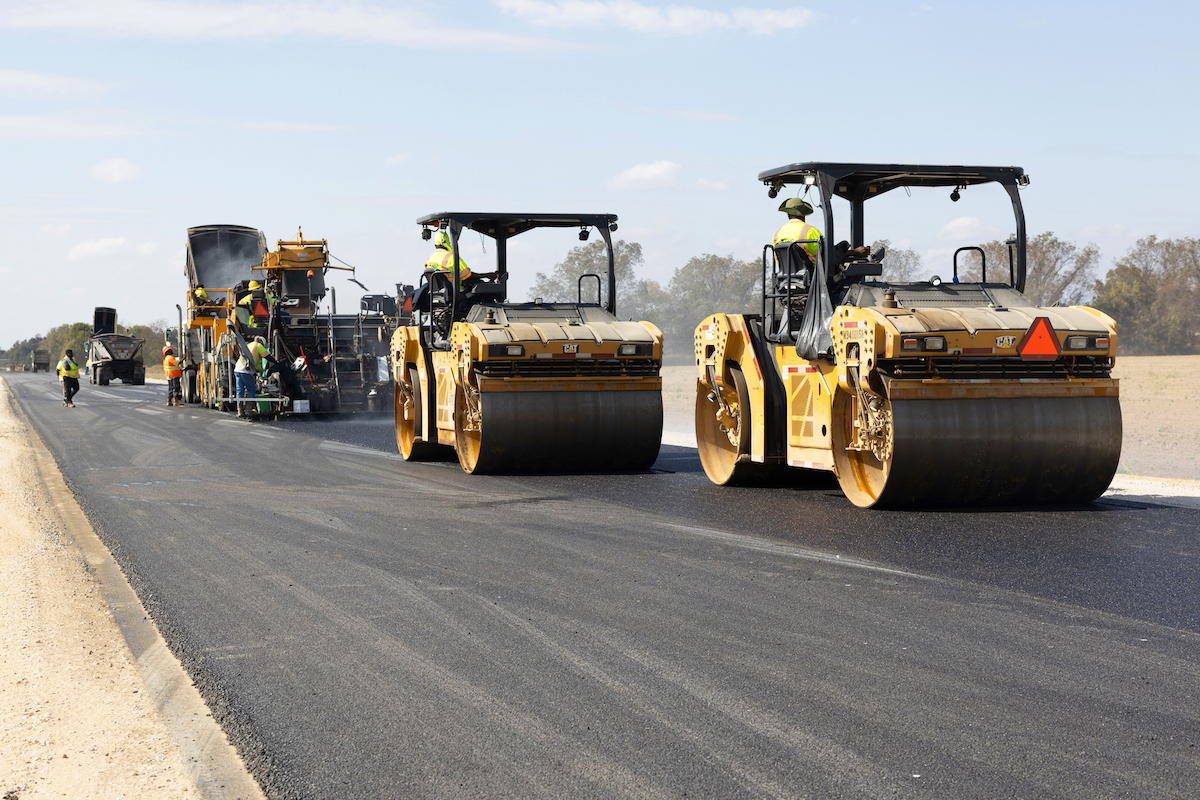But the complexities didn’t stop there. Because the highway improvements impacted the adjacent Pleasant Hill neighborhood, GDOT added a seventh project phase for mitigation that helps preserve the area’s history and culture while providing community enhancements.
For drivers, the ongoing I-16/I-75 Interchange Improvement project adds interstate lanes, a new collector/distributor system parallel to I-16 and I-75, and numerous operational improvements. Funded with federal and state dollars, the work represents an investment of more than $500 million to enhance safety and capacity throughout the corridor.
Their work included a new linear park on the east side of I-75 with green space; a 10-foot-wide, multi-use trail; lighting; and information kiosks displaying Pleasant Hill history.
On the west side of I-75, crews built Jefferson Long Park with landscaping and a community garden. The boyhood home of rock-and-roll icon “Little Richard” Penniman was relocated adjacent to the park and will serve as a community resource center and Little Richard museum.

| Your local Case Construction Equipment Inc dealer |
|---|
| ASCO Equipment |
The project also replaced the David Lucas pedestrian bridge and transformed a 1,700-foot-long, open drainage ditch into a grass-covered culvert. Throughout the community, crews resurfaced streets and rehabilitated sidewalks.
Because the interchange improvements impacted more than two dozen homes, GDOT worked with the Macon-Bibb Community Enhancement Authority to relocate some of the homes to vacant lots within the neighborhood, then rehabilitate them. The rest of the homes were demolished and replaced with 17 new residential structures that fit the neighborhood’s historic character.
Extensive assistance was provided to the impacted families, GDOT said. In addition, the demolition, moving, and rehab work generated jobs that allowed neighborhood workers to learn transferable construction skills.
The mitigation plan also created a new heritage tour highlighting neighborhood structures of historical interest. Hours of interviews with Pleasant Hill residents captured the oral and visual history of the community.
In one of the videos produced by GDOT, Peter Givens, President of the Pleasant Hill Neighborhood Improvement Group, said, “There’s money coming through this community, and everyone is talking about jobs. It means something when the people who live here become part of rebuilding the community.”
That construction will improve operational efficiency at all the interchanges within the project corridor – three interstate/arterial route interchanges (I-16 at Spring Street, Second Street, and Coliseum Drive) and the freeway-to-freeway interchange between I-16 and I-75. Reduced traffic weaving movements and longer sight distances will also enhance safety.
The new collector/distributor road system along I-16 and I-75 will provide additional non-interstate traffic capacity, decreasing congestion throughout the corridor by separating local traffic from through traffic. Modifications to bridges and surface streets will accommodate the additional interstate and collector/distributor lanes.
In the $70 million phase 1, C.W. Matthews Contracting Co. of Marietta, Georgia, improved approximately 1.5 miles of I-16 eastbound. They started their work in spring 2017 and opened the reconstructed roadway to traffic in summer 2022.
GDOT awarded phases 2 and 3 contracts together to E.R. Snell for $155 million. In summer 2017, they started work on operational improvements and new construction along I-75 northbound. That work is expected to finish in fall 2023.
For phases 4 and 5, GDOT awarded the contracts together to the joint venture of Webber LLC of Atlanta and United Infrastructure Group, Inc., of Great Falls, South Carolina, for $231 million. Their work on almost three miles of capacity and operational improvements to I-16 eastbound and westbound began in summer 2021 and is expected to finish in fall 2025.
In total, “Phases 2 through 5 consist of the construction of 32 bridges, replacing some dating back to the 1950s,” said Richard Lee, GDOT Assistant Area Manager - Construction. “Also included will be upgrades and improvements to local street intersections that coincide with the interchanges. The bridge construction is essential to an efficient infrastructure, providing an upgraded transportation mode to our residents and our welcomed visitors throughout the United States.”
Phase 6, the final piece of the project, is scheduled to bid in 2025. That contract will cover capacity improvements to I-75 northbound and southbound, including a new Norfolk Southern railroad bridge.
Good communication mitigated those issues, she said.
However, “In phases 2 and 3, project time has been extended due to field conditions and supply chain issues related to COVID,” Snider said. “In phases 4 and 5, project time has been extended due to utility conflicts.”
In the current configuration, approximately 140,000 cars and trucks utilize the I-16/I-75 interchange each day. When this project finishes, the corridor will accommodate more than 200,000 vehicles and provide better access to and from downtown Macon, Georgia.
“The I-16/I-75 project is a culmination of many years of hard work from the Georgia Department of Transportation and the community that came to fruition,” said Keenan Ford, GDOT District Construction Engineer. “This project enhances the interchange to accommodate the increasing average daily traffic flow for decades to come. The new interchange will improve freight logistics and provide better mobility for the traveling public.”
Photos courtesy of the Georgia Department of Transportation

















